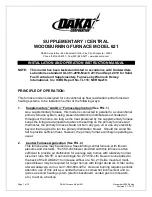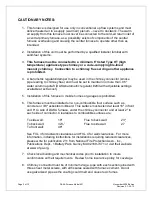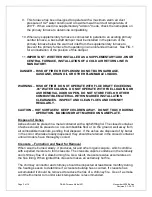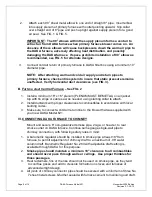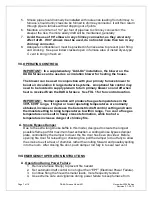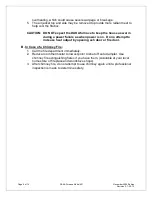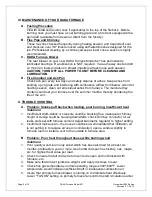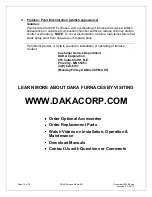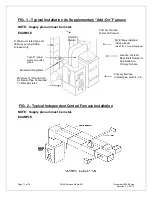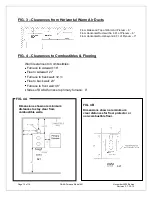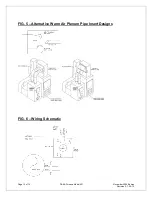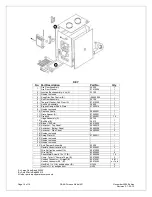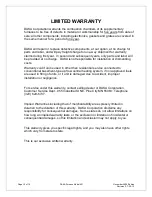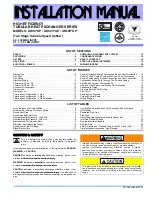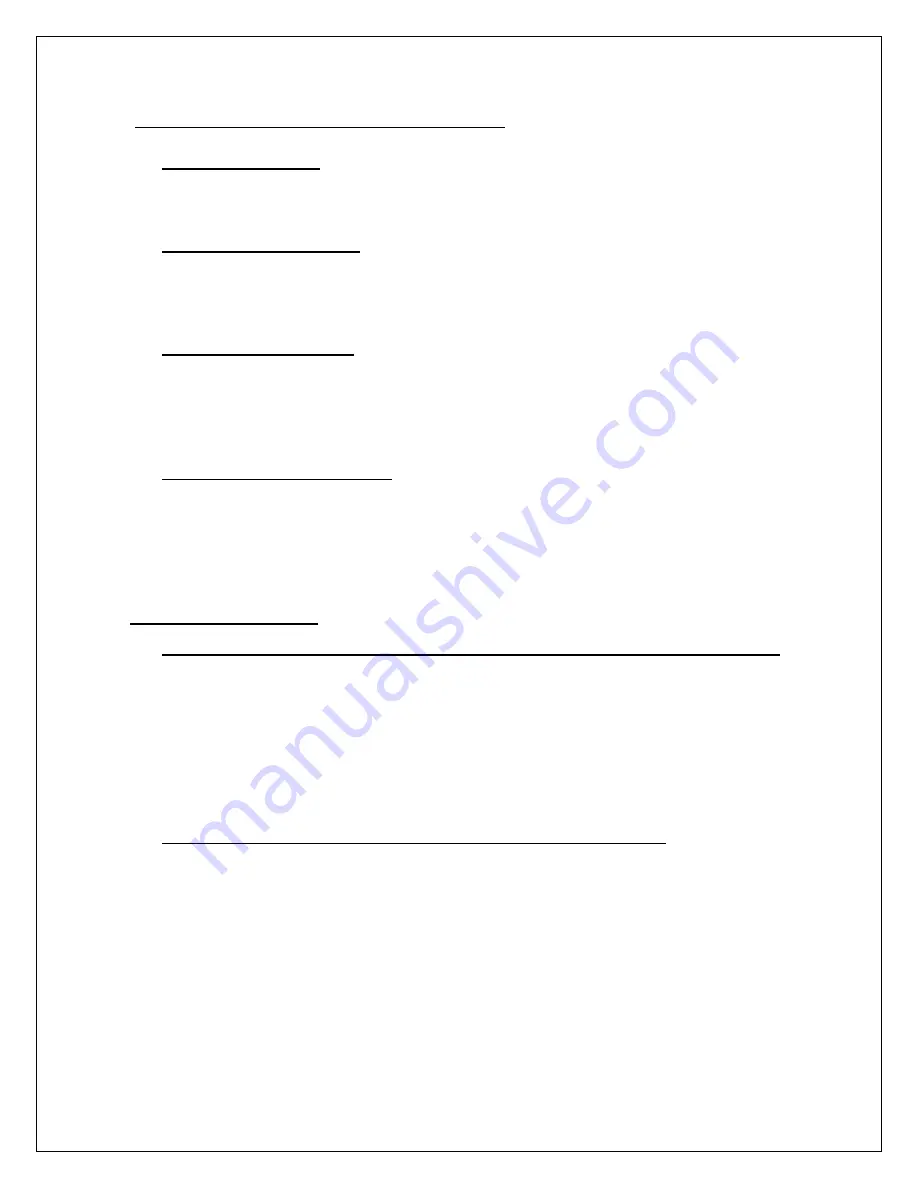
Page 9 of 15
DAKA Furnace Model 621
November 2009 Edition
Revision 2: 7-20-12
IX. MAINTENANCE OF YOUR DAKA FURNACE
A. Fueling Procedure
Fill with cordwood (and/or coal, if applicable) to the top of the firebrick. Before
burning coal, you must have a coal burning grate and a fire door equipped with a
spin draft (available from dealer or direct from the factory).
B. Flue Pipe and Chimney
These must be checked frequently during heating season, and deposits of soot
and creosote over 1/8" thick removed using stiff-wired brushes designed for the
job. Professional cleaning by a chimney sweep at least once a season is highly
recommended.
C. DAKA Furnace Blower
The rear blower on your new DAKA Furnace Model 621 has permanently
lubricated bearings. Re-lubrication is NOT required. Vacuum away dust and dirt
on motor air inlets and also on blower impellers at least once each season.
CAUTION: TURN OFF ALL POWER TO UNIT BEFORE CLEANING AND
LUBRICATION.
D. Fire Chamber and Ash Pan
Check ash pan every few days and safely dispose of ashes. Keep ashes from
building up on grate and interfering with combustion airflow from below. At end of
heating season, clean out all residual ashes from furnace. The moisture they
contain could rust your furnace over the summer months, thereby shortening the
life of the unit.
X. TROUBLE SHOOTING
A. Problem: Smoke puff back when loading, poor burning, insufficient heat
Solutions
:
1. Insufficient draft--debris or creosote could be blocking flue; inadequate chimney
height or design could be causing downdrafts; check chimney connector for air
leaks and seal with furnace cement; adjust barometric regulator to higher setting.
2. Insufficient make-up air-- the house could be so well insulated that infiltration air
is not getting in to replace air used in combustion; open a window slightly in
furnace room or install a vent to the outside in furnace area.
B. Problem: Poor heat throughout house while burning wood
Solutions
:
1. Poor quality wood--burn only wood which has been air-dried for at least six
months, preferably a year or more. Use hardwoods such as hickory, oak, maple,
etc. for highest heat value per load.
2. Check to insure that all cold air return vents are open and not blocked with
furniture, etc.
3. Make sure that all duct joints are airtight, and apply duct tape to seal.
4. Check flue gas temperature--normal operating range is 300º-600ºF. Lower
temperature would indicate insufficient draft or inadequate combustion air.
5. Insure that primary furnace blower is turning on to distribute heat effectively.
Lower "FAN ON" setting on primary furnace fan control to start circulation earlier.

